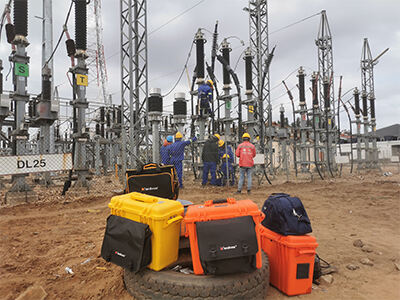Cable faults: Once again like all things in life, cable are not free from problems. Cable Fault Location is a problem that may occur in electrical cable. These issues can prevent electricity from flowing properly and it can be a risk to both people as well as equipment. Tanbos is committed to increasing the safety and efficiency of your electrical systems. Today we are going to discuss what causes cable faults, how to detect them before it happens often and some methods that can be used to prevent any untoward incidents.
Some Of The Common Causes For Cable Faults
These cable faults may be the product of a number of reasons. This is often due to having too much electricity running through cables that can overload. Second: Older cables that have been used for many years may eventually weaken and tear. The water can get into the wires and destroy them as well, as it damages the protective cover of the cable. Both the Sunlight and Cables for long time are also harmful. Over time, these problems can eat away at the casing that surrounds the cable and cause short circuits among other serious issues. It could be due to incorrect installation or construction work (digging, heavy machinery) that may also cause cables to be damaged. Any of these triggers may further increase the risks against Cable Fault.
How to prevent cable failure?
It's important to put measures in place to avoid cable faults occurring if possible. Regularly checking and testing cables can help to uncover issues before they escalate. This checking may involve a visual inspection of the cable cover for damage, as well as testing its electrical integrity. So many problems can be picked up with regular inspections. Proper installation of cables and maintenance of connections is also vital in ensuring that faults do not emerge. The purpose of grounding your electrical equipment, is a security measure to direct any overvoltage safely away. Surge protectors can also guard cables from unexpected surges in electricity.
How to Find Cable Faults?
Ensuring a timely error detection is crucial to keep the power flowing correctly and safe. To locate faults, we have some special machines like Cable Fault Locators. Similar to the above equipment that locates the problematic location within the cable with high accuracy. Thermal imaging cameras are one more best way of finding issues. These cameras view potential hot spots on the surface of the cable that can be indications, such as insulating overheated. By working with specialists up front can help detect issues early to avoid larger problems later on.
Taking Care of Cables
Regular maintenance is essential for keeping cables healthy. And that means resembling the conduits and trenches from which cables will run. If you inspect it routinely, this helps to make sure that everything is functioning well. Another thing to check would be connections, and make sure they are activated properly and not loose or broken. The best way to do when a cable is damaged, is to change the broken part as quickly as possible. Replacing full sections is preferable over making minor repairs, since the latter can result in additional problems and more damage down the line.
Solid Error Prevention Strategies
To avoid risks efficiently, keeping good practices every time is very important. From the most basic in identifying potential problems early on with regular cable testing, to ensuring your equipment and are as best protected by using surge protectors to guard against fluctuating power surges, verifying all connections made are done so correctly. It is also a wise strategy to train workers in locating and preventing cable faults. That was a long time ago though, regular training will help in raising the knowledge and skills so that everyone is aware when it comes to Safe handling cables.
To summarize, such cable faults can lead to serious damage and pose a real danger to human lives and equipment. At Tanbos, we are dedicated to providing excellent electrical services and reducing cable failures. We are able to aid in reducing cable induced faults by performing regular checks and best practices when installing cables. Instruments like cable fault locators, and thermal imaging cameras can be used to locate problems swiftly while adhering to some proper ways of going about things ensure that the electrical system is safe and sustained for people using it. These are the proactive steps we need in order to have an electrical system that is safe and reliable.

 EN
EN
 AR
AR HR
HR CS
CS NL
NL FR
FR DE
DE EL
EL HI
HI IT
IT JA
JA KO
KO NO
NO PL
PL PT
PT RO
RO RU
RU ES
ES SV
SV TL
TL IW
IW ID
ID SR
SR SK
SK UK
UK VI
VI ET
ET HU
HU TH
TH TR
TR FA
FA MS
MS GA
GA HY
HY AZ
AZ UR
UR BN
BN LA
LA MN
MN KK
KK
